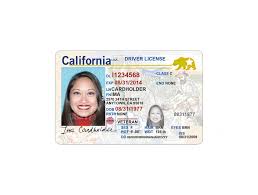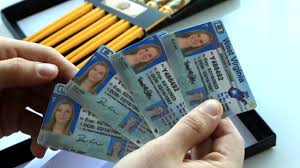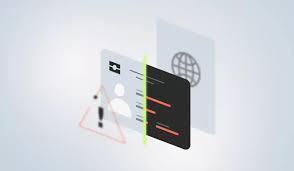can i use a fake
Can I Use a Fake ID? A Comprehensive Guide
Introduction
In today's world, the concept of identity verification has become increasingly significant. From entering clubs to buying age-restricted products, there are countless scenarios where proving your age or identity is required. However, what if you don't meet the age requirements or simply don't want to reveal your true identity? This is where the idea of using a fake ID comes into play.
Fake IDs have been around for decades, but with technological advancements, they have become more sophisticated and harder to detect. Whether you are a student trying to get into a bar or someone who needs a fake ID for other reasons, the demand for such products remains high. This article will provide a detailed overview of fake IDs, including what they are, their features, common questions, user experiences, troubleshooting, and a conclusion on whether or not using a fake ID is worth the risk.
Product Overview
A fake ID, as the name suggests, is a counterfeit identification card designed to mimic a legitimate one. These IDs are often used to bypass age restrictions or to hide one's true identity. Fake IDs can range from simple laminated cards to highly sophisticated replicas that closely resemble government-issued IDs. The quality of these fake IDs varies, with some being almost indistinguishable from the real thing.
Types of Fake IDs
Basic Fake IDs: These are usually low-cost and are often made from laminated paper or plastic. They may include basic information like your name, photo, and a fake date of birth. However, they often lack the advanced security features found on real IDs, making them easier to detect as counterfeit.
Advanced Fake IDs: These are high-quality replicas that mimic real IDs almost perfectly. They often include holograms, UV markings, and other security features that make them harder to detect. These IDs are typically more expensive due to the materials and technology used to create them.
Custom Fake IDs: These are tailored to your specific needs, whether it's the type of ID (driver's license, student ID, etc.) or the state or country it's supposed to represent. Custom fake IDs can include all the necessary security features and personal details, making them the most reliable option.
Features of Fake IDs
Fake IDs come with a range of features designed to make them as convincing as possible. Here are some of the most common features you might find on a high-quality fake ID:
Holograms and Watermarks: These are added to the ID to replicate the security features found on real IDs. Holograms and watermarks are difficult to duplicate, which is why they're often used as a means of verifying the authenticity of an ID.
UV Light Detection: Some fake IDs include UV markings that are only visible under ultraviolet light. This feature is crucial for passing more advanced ID checks, especially in places like nightclubs or airports.
Magnetic Strips and Barcodes: High-end fake IDs often include functional magnetic strips and barcodes that can be scanned like a real ID. This feature is particularly important for IDs that will be used in situations where electronic verification is required.
Raised Text and Microprinting: To further enhance the realism, some fake IDs include raised text and microprinting, which are features found on legitimate IDs. These details are often overlooked by the untrained eye but can be crucial in avoiding detection.
Customizable Information: One of the main advantages of using a fake ID is the ability to customize the information on it. Whether it's changing your date of birth, name, or even your photo, a fake ID can be tailored to suit your needs.
Common Questions About Fake IDs
Given the nature of fake IDs, it's natural to have some questions before deciding whether or not to use one. Here are some of the most common questions and their answers:
Is it illegal to use a fake ID?
Yes, using a fake ID is illegal in most countries and can lead to serious legal consequences if you're caught. Penalties can range from fines to imprisonment, depending on the severity of the offense and the laws in your jurisdiction.
Can fake IDs pass electronic verification?
High-quality fake IDs can sometimes pass electronic verification if they include functional magnetic strips or barcodes. However, there's always a risk that the ID could fail the check, especially if the equipment used is sophisticated.
What are the risks of using a fake ID?
The risks include legal repercussions, having your fake ID confiscated, and potentially being banned from certain establishments. Additionally, getting caught with a fake ID can result in a criminal record, which could affect your future employment or travel opportunities.
Where can I get a fake ID?
Fake IDs can be purchased online through various websites, although it's important to be cautious, as many of these sites are scams. It's also illegal to buy a fake ID, so you should be aware of the potential consequences.
How can I tell if a fake ID is high-quality?
High-quality fake IDs will include advanced security features like holograms, UV markings, and microprinting. They should also be made from durable materials and include accurate personal information. If an ID looks cheap or poorly made, it's likely to be easily detected as a fake.
User Experiences
Many users of fake IDs have shared their experiences online, providing insights into the effectiveness and risks of using these products. Here's a summary of some common experiences:
Success Stories: Some users report successfully using fake IDs to gain entry to clubs, purchase alcohol, or bypass age restrictions. These users often emphasize the importance of having a high-quality fake ID and being confident when using it.
Challenges Faced: Other users have encountered problems, such as being denied entry or having their fake ID confiscated. These issues often arise when the fake ID is of poor quality or when the user is nervous and draws attention to themselves.
Legal Consequences: There are also reports of users facing legal consequences after being caught with a fake ID. These cases highlight the risks involved and serve as a warning to others considering using a fake ID.
Troubleshooting and Solutions
If you encounter problems while using a fake ID, here are some potential solutions:
Problem: The fake ID is rejected or confiscated.Solution: If your fake ID is rejected, try to remain calm and avoid arguing with the person who detected it. It's best to leave the situation quietly to avoid further complications. If the ID is confiscated, consider it a loss and don't try to retrieve it.
Problem: The fake ID fails electronic verification.Solution: Unfortunately, if your fake ID fails electronic verification, there's not much you can do. To avoid this, make sure to purchase a high-quality fake ID that includes functional magnetic strips or barcodes.
Problem: The fake ID doesn't look realistic.Solution: If your fake ID looks fake, it's likely to be detected. Invest in a better-quality fake ID that includes advanced security features like holograms and UV markings. It's also important to ensure that the information on the ID matches your appearance and personal details.
Problem: You're nervous about using the fake ID.Solution: Confidence is key when using a fake ID. Practice using it in front of a mirror and rehearse what you'll say if questioned. The more confident you appear, the less likely you are to draw suspicion.
Conclusion
Using a fake ID comes with significant risks, including legal repercussions and the potential for being caught. While high-quality fake IDs can sometimes pass as real, there's no guarantee of success. If you choose to use a fake ID, it's important to be aware of the risks and take steps to minimize them, such as investing in a high-quality product and using it with confidence.
Ultimately, the decision to use a fake ID is a personal one, but it's crucial to weigh the potential benefits against the risks. For many, the risks may outweigh the rewards, making it a choice worth reconsidering. However, for those who decide to go ahead, understanding the features, risks, and solutions associated with fake IDs can help you make an informed decision.
 scannable Fake NorthCarolina D
scannable Fake NorthCarolina D
 scannable Fake MississippiDL
scannable Fake MississippiDL
 scannable Fake Minnesota DL
scannable Fake Minnesota DL
 scannable Fake Nevada DL
scannable Fake Nevada DL